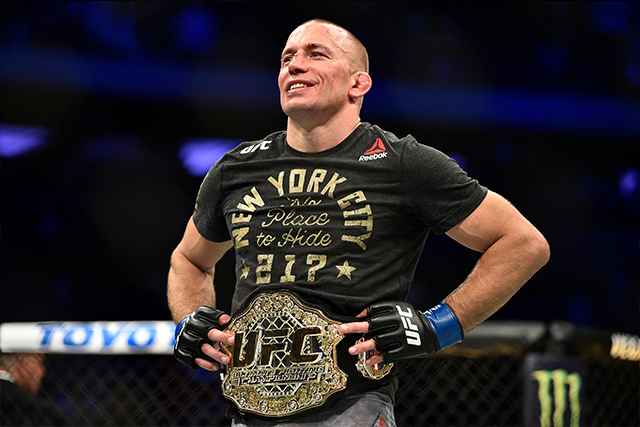Violence Puts off Journalist
Jake Rossen Sep 28, 2010

On Monday, a writer named Ivan Trembow released a long and impassioned essay on why he’ll no longer be paying attention to football, boxing, or mixed martial arts: the prevalence of chronic traumatic encephalopathy (CTE), which amounts to the scrambling of brain matter after repeated blows to the head. Autopsies conducted on the brains of combat-sport athletes have revealed tissue that resembles that of Alzheimer’s patients; while alive, they can exhibit signs of depression or erratic behavior. It’s nasty business.
Advertisement
Football players have become the tragedies of this subject because enough retired players have passed on to draw definitive conclusions -- none of them positive. But there are dramatic differences between the damage an NFL player is subjected to and the environment in a cage.
There are sixteen weeks in a regular football season, not including
playoffs. Each game lasts an hour in regulation. That leaves
players exposed to 16 hours, minimum, of “live” play time to ram
heads. Up until recently, the norm was that even players who got
cracked good one week would gamely trudge in the next week --
often, the next play -- and further endanger their brain.
The astonishing frequency of head-on collisions is what’s made so
many of these players a statistic: the worst thing for a concussed
brain is to get clocked again.
In MMA, elite athletes might fight three times a year total. Assuming they’re all title bouts, that leaves them at risk only 75 minutes out of the year -- usually less, and at intervals spaced three to four months apart. The window of misfortune for fighters is only a fraction of what it is for football players, presuming they’re smart enough not to savage one another in training.
What alarms Trembow -- and others -- in MMA is the punctuating shots: the blows that follow when an athlete is already effectively finished. (Think of Dan Henderson’s jumping right hand that crashed into an already-unconscious Michael Bisping.) If the worst thing for an injured brain is immediate further injury, this is catastrophic.
The “but” is that no one is sure at what interval an unnecessary blow becomes a factor in morbidity. A fighter with a concussion getting into another fight ten minutes later is begging for trouble -- but what about a fighter who receives blows literally a fraction of a second after unconsciousness? The brain is already being jarred: you might turn a mild concussion into a worse concussion, but that’s not necessarily clinically significant. Margaret Goodman, MD, a former ringside physician for the Nevada Athletic Commission, told me in earlier this year that “You’re getting an added concussive effect and getting a more pronounced concussion by the repeated blows. I wouldn’t think it would predispose them to something worse.”
She’s not one hundred percent sure of that; neither is Trembow and his assertion that bad ends await fighters. Science is an inexact science. There are literally dozens (if not hundreds) of variables that can affect whether or not a combat athlete retires with his head largely intact or suffers from debilitating damage that ruins the last act of a life. Punches that are so concussive in the first five minutes of a bout lose steam by the fourth or fifth; fighters may have genetic predispositions to trauma; fighters may train foolishly, getting dazed in the gym; fighters may not take advantage of the dimensions in MMA that allow them to minimize blows to the head.
And while it’s only one brain, the lone MMA fighter autopsied by Julian Bailes, MD, who helped pester the NFL into concussion-treatment reform, was inconclusive for CTE.
Ten or twenty years from now, I have no doubt we’ll be seeing cautionary tales emerge from this sport. But the consent of the athlete is what prevents them from being morally reprehensible. Fighters fight because they want to -- many of the guys who make millions of dollars today entered the sport when it paid pennies. It’s their choice. And CTE or not, there is no lifestyle that reduces the risk of death.







